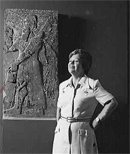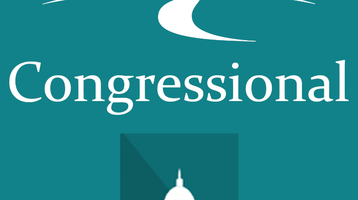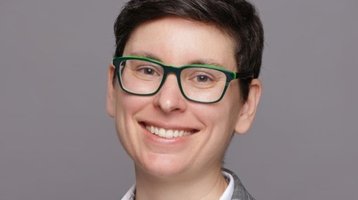Erica Reiner Bequest Enables Purchase of Rare Collection
The acquisition is made possible by the bequest of Erica Reiner (1924-2005), the John A. Wilson Distinguished Service Professor Emerita
in the University’s Oriental Institute, the Department of Near Eastern
Languages and Civilizations, and the Department of Linguistics, and Editor-in-Charge
of the Chicago Assyrian Dictionary. Reiner, who began working on the
dictionary in 1952 when she came to the University as a research assistant,
specialized in Babylonian history of science, including medicine.
An affiliation between the University of Chicago and Rush
Medical College was established in 1898; for nearly three decades the
University was responsible for the first two years of preclinical training,
with clinical training provided at Rush. When Billings Hospital
opened in 1927, the University began to develop the clinical component of a
medical school on campus, and the affiliation with Rush was terminated in 1941.
Comprising over 3,500 volumes dating from 1500 through the
mid-20th-century, the collection includes nearly 500 rare titles
printed before 1800. The most represented author in the collection is
Hippocrates, editions of whose works were very popular through the 18th
century; many early editions of the works of Galen are also present, including
1531, 1549 and 1561-2 editions.
The collection will be known as the Stanton A. Friedberg M.D. Rare Book Collection of Rush
University Medical Center at the University of Chicago. Books relating to otorhinolaryngology (diagnosis and
treatment of the ear, nose, throat and neck), Dr. Stanton A. Friedberg’s
medical specialty, and infectious diseases, in particular mid-19th
century European cholera epidemics, are areas of particular strength.
The earliest book in the collection is a bound volume of two
works by the Renaissance philosopher Marsilio Ficino: De
Christiana religione ad Laurentiu [m] Medicem opus aureum (1500) and Opuscula (1503). Other important works from the 16th century include Pietro Mattioli, Commentarii
(1554), an early medical botanical with hand-colored woodcut illustrations; Gaspare Tagliacozzi, De curtorum chirugia (1597), the first work on plastic surgery,
with the extra engraved title page; and an intact, 1660 anatomical “flap” book,
Johann Remmelin’s Catoptrum microcosmicum.
A highlight of the collection is the first edition of
Andreas Vesalius’s De Humani Corporis
Fabrica (Basel:
Johannes Oporinus, 1543) in a contemporary binding dated 1581. The collection
also includes the first edition of the translation of Vesalius’s work into
German, Anatomia Deudsch (Nurnberg: Jul. Paolo Fabricio, 1551), and the Bremer
Press 1934 edition, Icones anatomicae,
which used the 1548 second edition woodblocks, which were destroyed in World
War II.
The history of medicine collections have been a focus at the
University of Chicago since the early 20th
century; these materials are used extensively by historians of science and
medicine, art historians, and cultural historians. During the 20th
century, gifts from the collections of Chicago
physician and scholar Dr. Mortimer Frank, who translated a classic book on
anatomical illustration, and Chicago collector Joseph Halle Schaffner expanded
this substantial core.
The University of Chicago’s
archival collections include professional papers of physicians and medical
researchers associated both with the University and Rush, including James B.
Herrick, Charles Huggins, Leon Jacobson, Ralph S. Lillie, Franklin McLean,
Howard Ricketts, and Nicholas Senn, as well as administrative records relating
to the University
of Chicago’s medical
school. The papers of physician, editor, and writer Morris
Fishbein, a University of Chicago and Rush Medical
College graduate, are
another example of the interlocking relationships between the two institutions
reflected in the collections.
With the merger of the University of Chicago and the formerly
independent John Crerar Library in the early 1980s, many rare books and the
professional papers of Chicago physicians and the archives of Chicago medical
organizations came to the University of Chicago Library. These accessions
further deepened the documentation in the University
of Chicago’s collection of personal,
professional, and institutional connections between the University
of Chicago and the Rush University
Medical Center.
Stanton A. Friedberg received his M.D. from the University
of Chicago in 1934. Dr. Friedberg and his wife, Martha Friedberg, a poet, were
longtime friends of the University of Chicago and donated books from Dr. Friedberg’s
library to the University
of Chicago.
The collection will be available to University of Chicago
students, faculty and staff; members of
the Rush University Medical Center community; and other interested researchers
who wish to study the history of medicine and the relationships between these
institutions and the individuals who built and were associated with them.
Processing of the collection will begin immediately, and
items will be available through the Library’s catalog or Lens as they are
cataloged. If you are interested in specific titles, authors or subjects,
please contact Alice Schreyer, Director,
Special Collections Research Center; or Andrea Twiss-Brooks, Co-Director, Science
Libraries, University of Chicago Library.
Image of Erica Reiner from the Archival Photographic Files, University of Chicago Library



